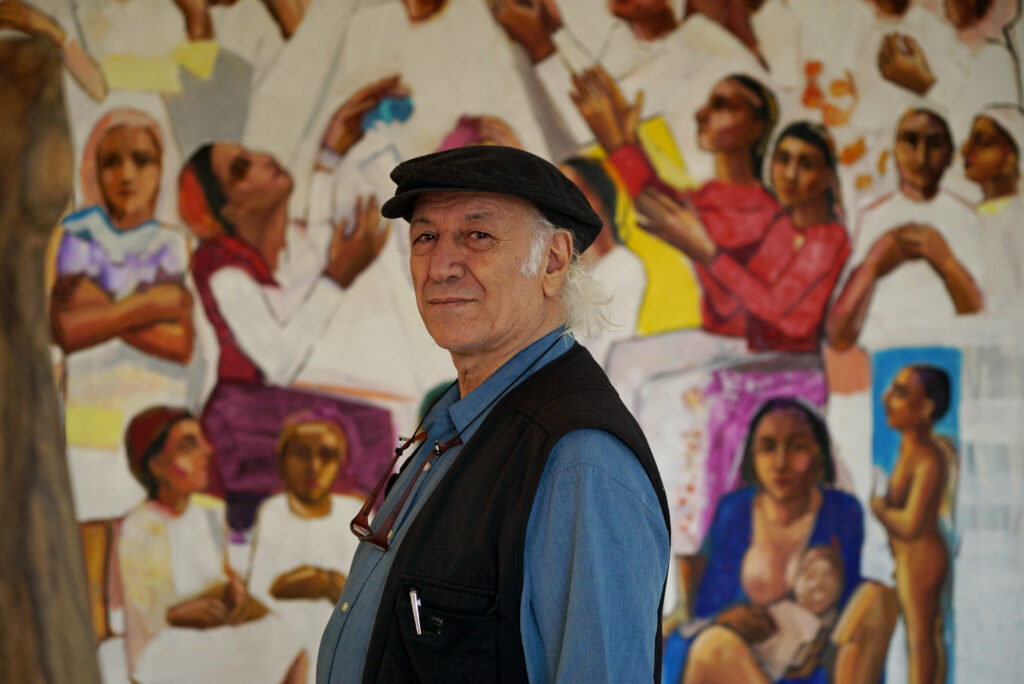
Biography
Jamil Molaeb (1948) born in Baissour, Lebanon
Molaeb started his artistic career in the seventies, after training under renowned artists such as Chafic Abboud and Paul Guiragossian at the Fine Arts Institute of the Lebanese University. In 1967, 18 years old Jamil Molaeb won the 3rd prize of sculpture at 7th Salon of the Sursock Museum.
Craving further discoveries and exposure to the world, he spent a year studying in Algeria and, in 1984, enrolled in the Master of Fine Arts program at New York’s Pratt Institute, to later obtain a doctorate in artistic education from Ohio State University.
Back in his native country in 1989, Molaeb started teaching art at the Lebanese University and the Lebanese American University of Beirut.
Since 1966 he has held different solo exhibitions in Lebanon, Algeria, France, Switzerland and the United States.
His work has been showcased in a number of Art Fairs: Art Abu-Dhabi, Beirut Art Fair, Art Dubai, Art14 London and La Biennale de Lyon.
Jamil Molaeb’s work has been exhibited at international museums such as the Gropius Bau Museum in Berlin, his paintings are acquired by public and private collections including The World Bank in Washington DC, the Institute de Monde Arabe in Paris and has been sold in international auctions.
His work is permanently on show at Galerie Janine Rubeiz.
In 2015, he built his own Museum – ”Jamil Molaeb Museum” in Baissour Mount-Lebanon.
About his work:
Molaeb is a curious mixture of a thinker and mystic. He shows throughout his abstract work his interest in the Druze cabalistic tradition and the way it conflates notions of boundless space with divine light.
Jamil Molaeb’s signature paintings conceive of the color field – the ultimate destination for an abstract painter -as a traditional landscape, and evokes through those minimal pictorial frameworks, the magic simplicity of miniatures and icons. In his large colorful paintings, constructed in a simple identical operation, symbols emerge out of their alphabet and bifurcate into solid architectural forms, creating uncanny aerial like views, operating often as cultural archetypes. There is also a place for genre painting, however executed in an expressionist style, while not shying away from the folklore element. In his woodcuts, Molaeb demonstrates a unique skill to converse between parallel techniques, temporalities and concepts: Resorting to a traditional technique, inherited from the Italian 15th century (coeval with the first oils on canvas), the artist deploys quintessential modernist strategies that would be easily read by the expressionist and post-expressionist painters of Europe, indubitably alerted by his bright palette combined with primal archetypes, characteristic of pre-classical art.
Jamil Molaeb kept on exhibiting canvases inspired as much by Western art history as by ancient Egyptian, Sumerian and Babylonian art. Not one to be confined within a single style, Molaeb easily switches from village scenes to minimalist compositions with squares of bright colours. When he paints a landscape, it is to celebrate the nature that surrounds him through the reproduction of the sensations and emotions it inspires him.